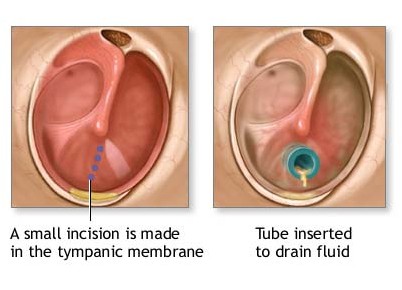The middle ear space is normally filled with air. If the middle ear is filled with fluid instead of air, hearing is muffled or garbled. This can interfere with your child's learning to speak because children imitate the sounds they hear. By draining fluid, tympanostomy tubes allow the middle ear to fill with air again and ventilate properly. Hearing usually improves soon after the tubes are placed.
Ear tube is a small ventilation tube which is inserted through the small opening on the ear drum. The tube will fall off in about 9 to 12 months. Most children will eventually outgrow the tendency to develop middle ear infections and will no longer need the tubes. If your child continues to have frequent middle ear infections, it is possible that your physician will recommend replacing the tubes.
Who needs the operation?
Those who have recurrent ear infections or chronic middle ear effusion affecting hearing
Why having the operation?
The aim is to equalize the pressure on both sides of the ear drum so as to improve hearing. In case of acute middle ear infection, insertion of the small tube can help drain the pus out.
Surgical risk and possible complications:
Common risk: recurrence, infection, bleeding, residual perforation of ear drum (around 1 %)
Less common risk: hearing loss, vertigo, dislodgement of ventilation tube into middle ear, implantation cholesteatoma
What would happen if NO operation?
Complication of acute middle ear infection will result, such as acute mastoiditis, intracranial spread.
Kevin Ki-Hong Ho, MD
San Francisco
Ear, Nose & Throat Specialist
Ear tube insertion (Myringotomy with tube insertion)
Golden Gate ENT
Kevin Ki-Hong Ho, MD
San Francisco
Ear, Nose & Throat Specialist
2017 Golden Gate ENT Corp. All rights reserved. Created by Kevin Ho, MD
Kevin Ki-Hong Ho, MD
San Francisco
Ear, Nose & Throat Specialist


